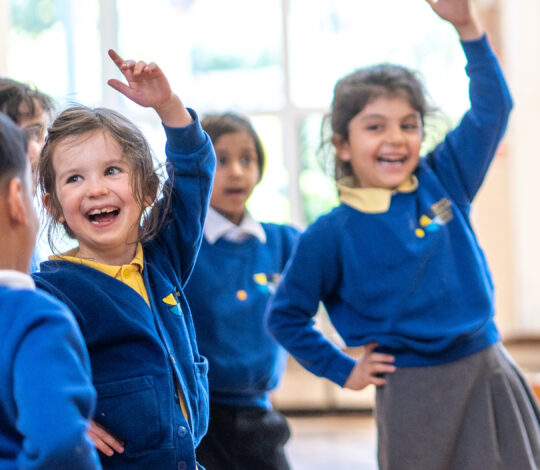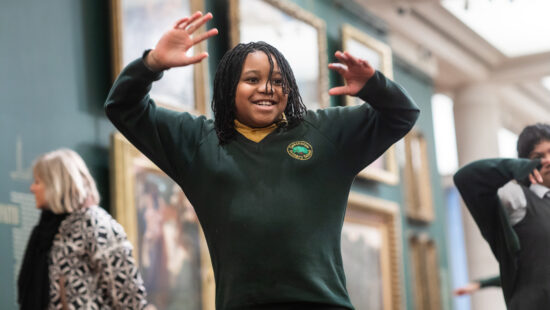Evaluating our impact

Evaluating our impact
By Carys Owen (Cuckoo)
Let me preface this blog by telling you that we are going to be discussing the collection and analysis of data to assess the impact of creativity in the curriculum… but STOP, WAIT, stick with us for moment before you return to the Best 100 Funny Cat videos! We’ve tried to make this as easy to digest as possible, and it should give you some guidance for monitoring creative provision in your own classroom.
Measuring the Impact of Arts Participation
The impact of the arts is notoriously hard to quantify due to the intangibility of “creativity” and so-called “soft-skills”, and the intrinsic value of the arts. Former Chair of the Arts Council, Sir Peter Bazalgette, wrote that:
“The arts are essential, but so embedded in our lives that their presence often goes unacknowledged. Pinning this down requires specifics. It needs more measurement, more evaluation, and a new language of value to communicate across different sectors of influence.”
Towards Plan A: a new political economy for arts and culture, 2013
Among many others, Bazalgette recommends that arts organisations need to find more ways to quantify their own necessity, and has suggested that arts organisations should be smarter in the way they do this. Since this report, there has been a significant effort from arts organisations to collect data and gather evidence to make the case for the arts, but more still needs to be done.
In a 2015 Durham University report on the impact of arts education on the cognitive and non-cognitive outcomes of school-aged children, they conclude that “though there are promising leads… there just isn’t enough robust evidence to be able to demonstrate a causal link between arts education and academic attainment.”
A report commissioned by the Arts Council also in 2015, looked at ways in which arts organisations can align their framework of assessment with those within education, by following its Quality Principles. The seven quality principles are:
- Striving for excellence and innovation
- Being authentic
- Being exciting, inspiring and engaging
- Ensuring a positive and inclusive experience
- Actively involving children and young people
- Enabling personal progression
- Developing belonging and ownership.
This gives organisations and practitioners some guidance on the key outcomes that cultural organisations can use to ensure their programming has impact for its participants.
Following on from this, the Cultural Learning Alliance’s 2017 research project used large sample sizes of 12,000 to find the following key research findings:
- Participation in structured arts activities can increase cognitive abilities by 17%
- Learning through arts and culture can improve attainment in Maths & English
- Learning through arts and culture develops skills and behaviour that lead children to do better in school.
- Students from low-income families who take part in arts activities at school are three times more likely to get a degree
- Employability of students who study arts subjects is higher and they are more likely to stay in employment
- Students from low-income families who engage in the arts at school are twice as likely to volunteer
- Students from low-income families who engage in the arts at school are 20% more likely to vote as young adults
- Young offenders who take part in arts activities are 18% less likely to re-offend
- Children who take part in arts activities in the home during their early years are ahead in reading and Maths at age nine
- People who take part in the arts are 38% more likely to report good health.
This study is evidence that there is an increased awareness of the need for data to assess the impact of the arts, and particularly the social and educational impact of the arts in formal and informal education settings. The figures also demonstrate the very convincing statistics that show a positive correlation between the arts and attainment.
Measuring the Impact of Arts in Schools
In an education climate driven by assessment, it is necessary for us to look at ways in which schools themselves can record pupil progress and attainment in creative sessions and to measure impact and inform future teaching, provision, and outcomes for learners.
Ofsted assess all schools on “a broad and balanced curriculum (that) inspires pupils to learn… including the humanities and linguistic, mathematical, scientific, technical, social, physical and artistic learning.” This includes “children’s enjoyment of learning, including their participation and willingness to make choices and decisions, and the extent to which children are active and inquisitive learners who are creative and think critically.”(Ofsted, 2016)
The assessment of pupil progress is an integral part of school reporting, whether that be to monitor key National Curriculum indicators or to keep track of funding streams such as Pupil Premium or Sports Premium. The paperwork is a necessary evil, but recent studies by Ofsted into outstanding primary and secondary schools highlighted the prime contribution of effective use of data for the success of case study schools (Ofsted, 2010).
In schools, assessment should be the “accurate and usable knowing and understanding of children, not the quantity of recorded information” (Dubiel, 2014). We therefore need to make sure that the way we record data is appropriate for the information we need to collect, and that the data we collect is valid.
Using quantitative data (numerical) is the most common form of assessment within formal school settings because it is clearer cut and stats-based. This might include tracking assessment scores or surveying children or teachers on focused sets of data. However, in terms of understanding the scope of arts in education, qualitative data (variable) tends to give us a more in-depth understanding of creativity’s role in pupil attainment. Qualitative data, such as a questionnaires or focus groups, allows us to understand opinion and collect observations.
For larger pieces of research on pupil progress, teacher effectiveness and development, the most solid data-sets will use a combination of both research types for analysis, which is something we wanted to ensure in our own Artis Monitoring and Evaluation Toolkit.
Artis Learning Framework

Our Artis Learning Framework is inspired by an outcome based education model, where emphasis is placed on what is essential for children to be able to do at the end of their learning journey. This model asserts that all ‘students can learn and succeed, but not on the same day in the same way’ and, therefore, the same set of learning outcomes can be pursued via a variety of approaches and methods.
The Artis Learning Framework highlights how our core skills support the learning goals and outcomes in the National Curriculum. Each Artis session your children participate in works to holistically develop the skills and knowledge required to be successful learners.
Therefore, at Artis we wanted to offer a couple of tools to help schools track the progress of their creative sessions. We developed our Monitoring and Evaluation Toolkit to assist in monitoring the impact of our programme and offers some ideas, frameworks and templates that you can adapt to suit your school’s needs for the assessment of Artis delivery.
The Toolkit comprises of two key tracking tools: the Holistic Learning Snapshot and the Skills Development Record. These templates have been designed to be adapted to your school’s specific assessment criteria and can be used by either class teachers or TAs in Artis sessions.
The Holistic Learning Snapshot outlines National Curriculum descriptors that are most strongly supported through your Artis provision, and uses the assessment without levels system to track progress. The Skills Development Record is used to demonstrate the performing arts skills your children are acquiring in their Artis sessions.
There is also a questionnaire template for Personal Reflection to gather feedback from children on their experiences of Artis sessions in their own words.
These tools can be used separately, or in combination, to assess your children’s progress. Some examples you might track include:
- Confidence, teambuilding and speaking and listening;
- A group of children receiving Pupil Premium;
- Impact of PE and Sports Premium funding.
Each tracker provides a number of descriptors to allow you to select categories as required in order to tailor these tools to your focus and objectives.
The opportunities for monitoring and evaluation will be best determined by you, but tracking your Artis delivery at three key points (ideally each term) provides for a strong narrative on your children’s development at the beginning, middle and end of their Artis provision.

